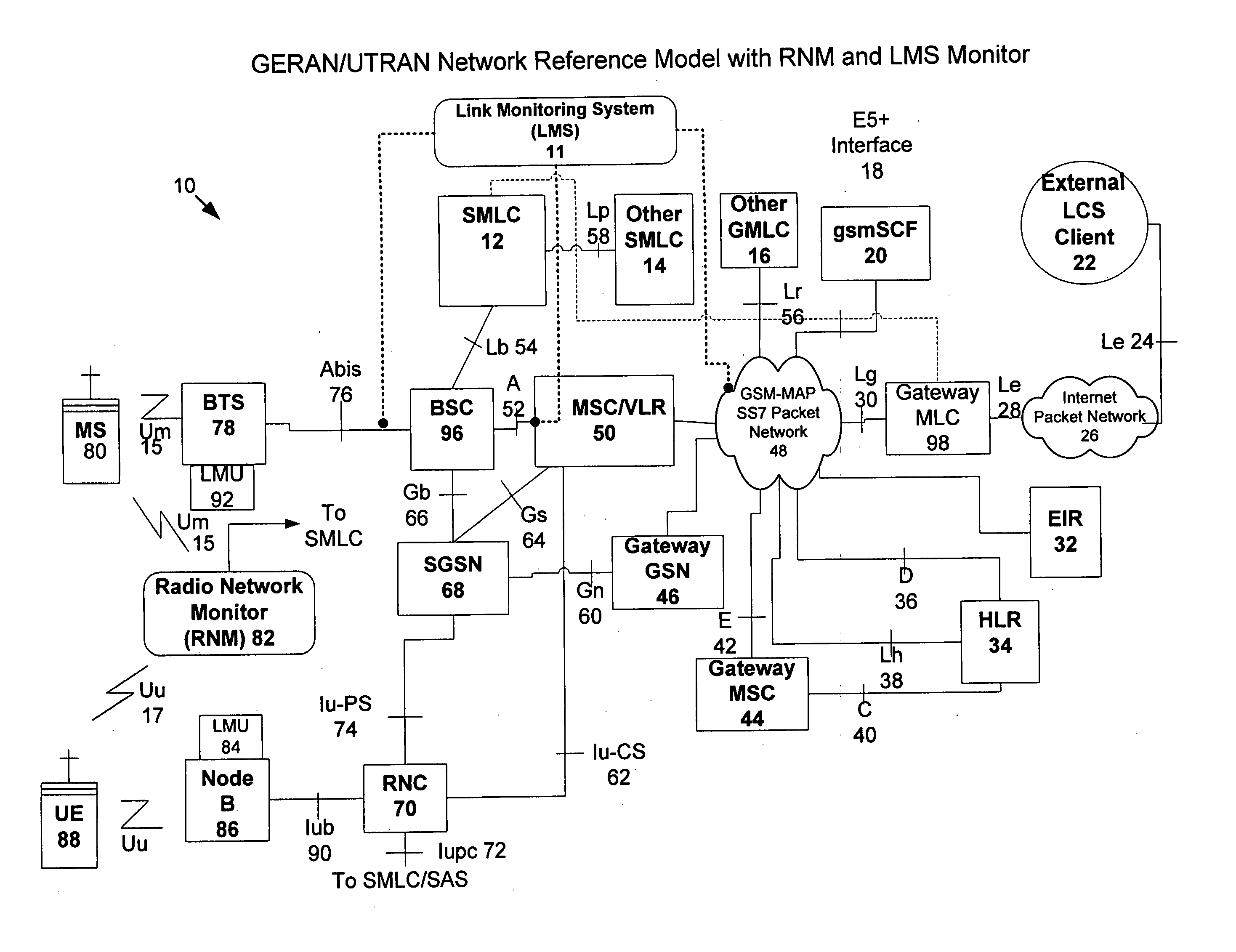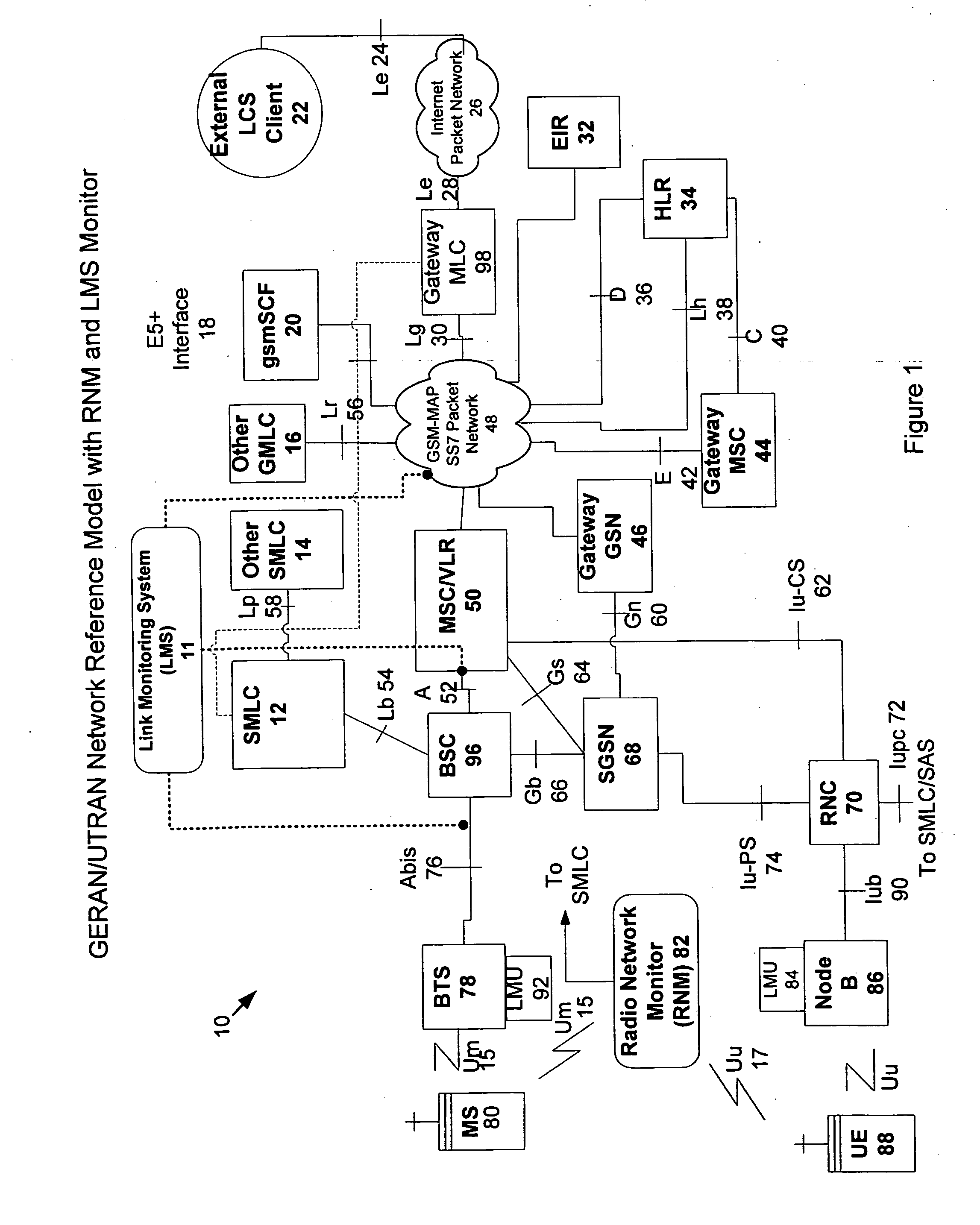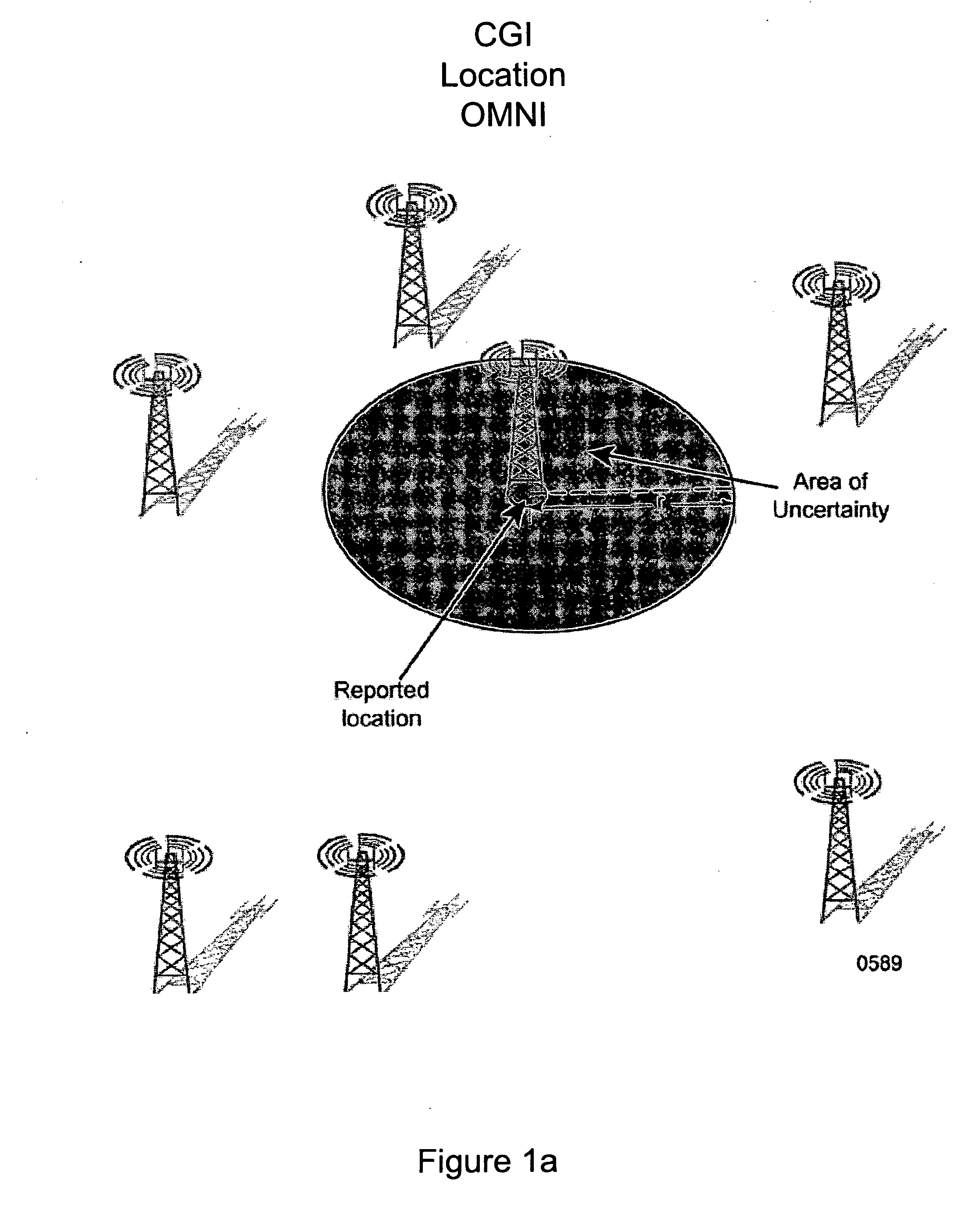Advanced triggers for location-based service applications in a wireless location system
a wireless location system and advanced technology, applied in the field of advanced triggers for location-based service applications in wireless location systems, can solve the problems of saving lives, saving enormous costs, and reducing emergency response tim
- Summary
- Abstract
- Description
- Claims
- Application Information
AI Technical Summary
Benefits of technology
Problems solved by technology
Method used
Image
Examples
Embodiment Construction
[0061] A. Overview
[0062] The inventive system described herein may be viewed as a substantial extension of the system described in U.S. application Ser. No. US2004000768587, and its parent, U.S. Pat. No. 6,782,264 (Anderson). For example, while the '264 patent describes a system that monitors communications between a base transceiver station and base station controller, and forwards mobile station (MS) information to a Wireless Location System for emergency call location, the advanced location-based services applications described herein utilize additional network messages as triggering events and information sources for a wide variety of location-based services.
[0063] It should be noted that many of the acronyms and abbreviations used herein are taken from Technical Report GSM 01.04 V8.0.0 (2000-05), Digital cellular telecommunications system (Phase 2+); version 8.0.0 (Release 1999); Abbreviations and acronyms. The terminology and nomenclature used to describe this invention are ...
PUM
 Login to View More
Login to View More Abstract
Description
Claims
Application Information
 Login to View More
Login to View More - R&D
- Intellectual Property
- Life Sciences
- Materials
- Tech Scout
- Unparalleled Data Quality
- Higher Quality Content
- 60% Fewer Hallucinations
Browse by: Latest US Patents, China's latest patents, Technical Efficacy Thesaurus, Application Domain, Technology Topic, Popular Technical Reports.
© 2025 PatSnap. All rights reserved.Legal|Privacy policy|Modern Slavery Act Transparency Statement|Sitemap|About US| Contact US: help@patsnap.com



